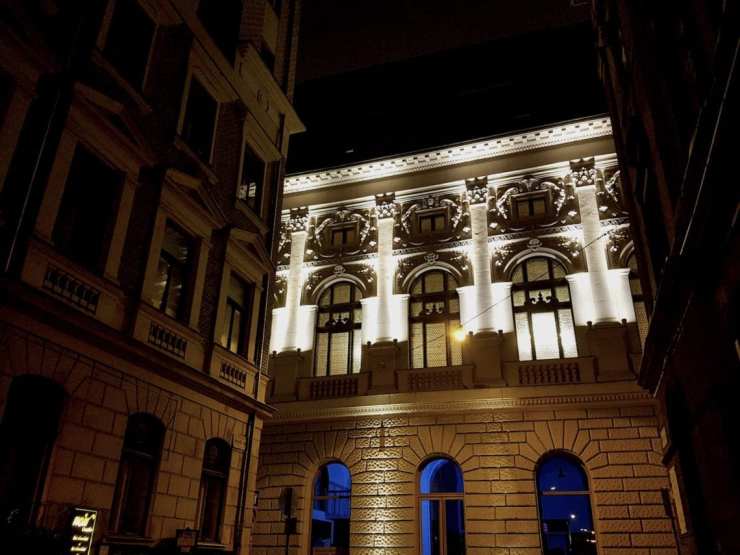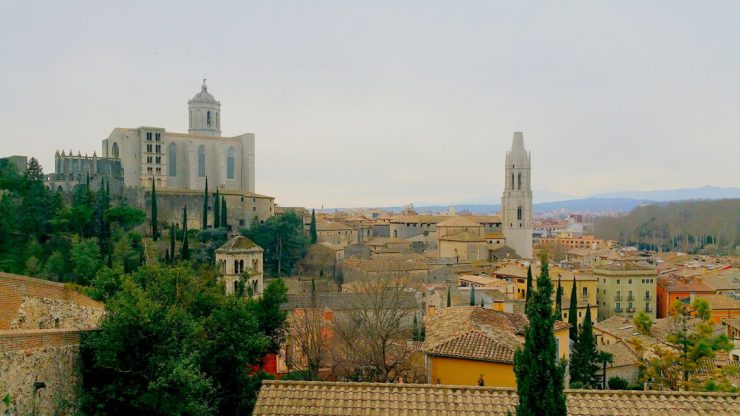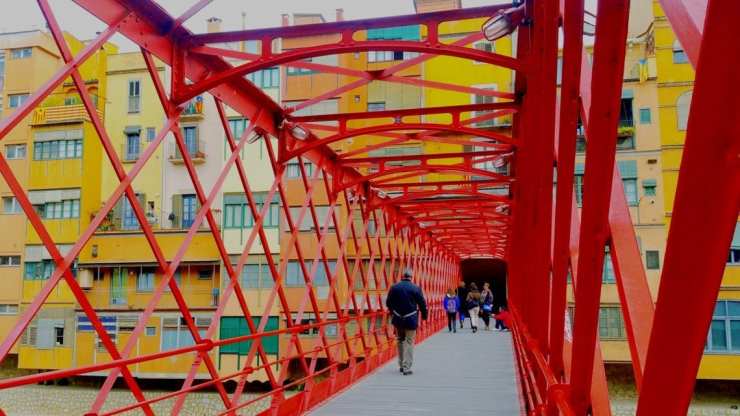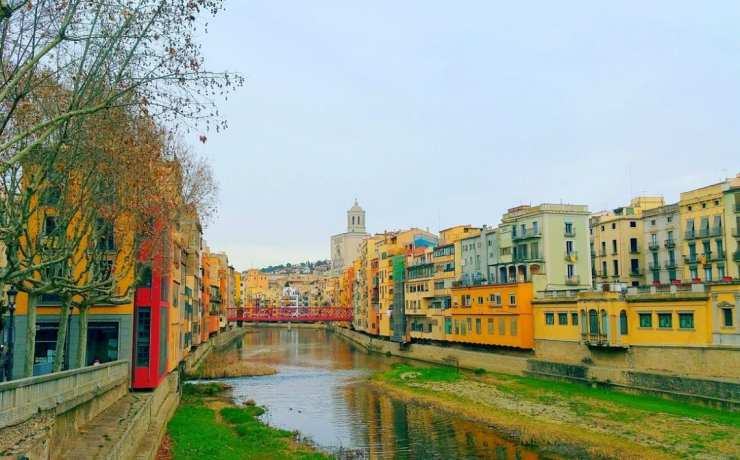In the flat plains of Pest, which the Hungarian calls Peshth, we took over the city on foot. It drove our friend Vee up the wall, those long evening walks by the Danube when the fingers ached with a strange intensity, startled by the piercing cold of the night when even breathing seemed like a bad idea. Lights twinkled through the fog that sat thick upon Gellért Hill high above us as we crossed the Liberty Bridge, the bridge that looks like it was fashioned out of turquoise metal and ebullience. The kind of ebullience that comes with freedom, freedom from the Nazis. But then the smothering of that very freedom by the Soviet for at least five decades.
A saint stood high above that hill holding aloft a cross, a man who was stashed into a barrel and rolled down the hill by irate Magyars when he attempted to convert them to Christianity. For all his sins, Gellért Sagredo had the hills named after him, the very hills down which he was tumbled to his death. And a hotel too. Hotel Gellért of the splendid Art Nouveau façade and iconic thermal baths, a reprieve from the harshness of a winter’s evening. The baths of Budapest are like grand flourishes of the city’s past. There are said to be 120 warm springs simmering beneath the surface of the city which the Roman, Ottoman and Austro-Hungarian empires lost no time in tapping, leaving behind a legacy that the city is quite so proud of.
The intense cold drove us back into the arms of Pest’s hipster heart – District VII. It helped that we had chosen to stay in a chic little apartment a stone’s throw from a sprinkling of Christmas markets, classical cafés and restaurants, strung with fairy lights most becomingly on frigid nights. The kávéház, the legendary cafés like Café Gerbeaud where you gave into a long-standing tradition bequeathed by the Austro-Hungarian empire and found yourself transported to the grand old cafés of Vienna. The glutton in you was hard pressed not to pleasure the gut at every stop. And oh, those vintage clothes boutiques where it was difficult not to sigh over the warmth and prices of sable coats, pieces of decadence that demanded deep pockets.
We sought warmth in local bars, the kinds where old men sit and drown their loneliness in glasses of whisky and we revived ourselves in shot bars where a pretty bartender handed out tulip-shaped glasses of aged pálinka, feeling the burn of it soothe the cold away with a dab hand, murmuring ‘come child come’. And then we wandered around District VII, letting its intriguing personality seep into us. The Jewish quarter secreted away into the district’s inner parts, the synagogues with their onion domes and Moorish exteriors making the jaws drop. Derelict buildings flanked a warren of cobbled streets that seemed to be a repository of rundown structures, often crumbling away beneath layers of gigantic murals which are infused with the spirit of the city and that of the artists inevitably.
Some of those ramshackle buildings that have been slipping into gradual disrepair since WWII have been converted into pubs. Ruin pubs. Hubs of underground culture. The oldest of the lot is Szimpla Kert. Set up in a disused stove factory, it is a place for the youth to hang out with cheap drinks, watch outdoor movies, buy fresh produce from farmers on Sundays… The layout was fluid. A sprawling space filled with themed rooms, one leading into the other, distressed furniture, winding stairs leading to more rooms, psychedelic lighting that kind of makes it seem right that a bicycle should hang over your head, that you should slide into a clawfoot tub to sit in cosy comfort with your lover and that there should be a disused Trabant car (East German commie car for the hoi polloi) standing in the garden, a remnant of grim times.
In that ruin pub, we sat on a swinging party night with a bottle of wine and took in our eclectic surroundings when there was a discordant note struck by carrots. Not a product of my imagination, no sir, though that would be a possibility given the heady wafts of weed in the air. A girl circulated around us with a basket of carrots. Did we want to buy some? Now how do you say no to carrots? It was a strange night that, wrapped up in the apple smoke of the hookah. It made me dream of Berlin and it also made me think that the more you travel, the more you see this underlying thread of similitude (this innate urge to break free) that seems to bring people and places together.
























































